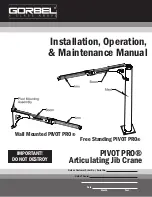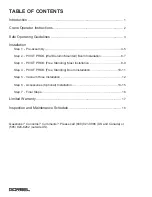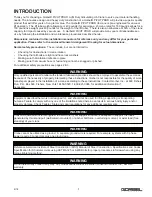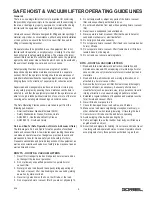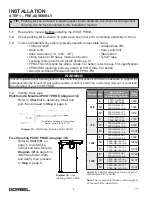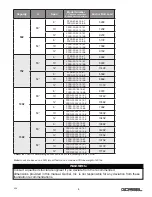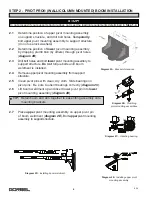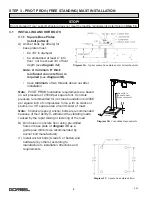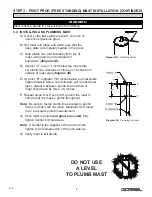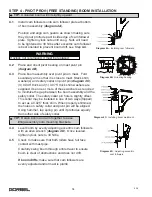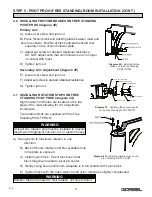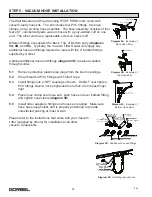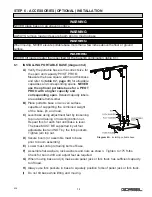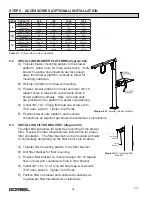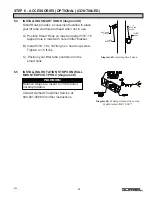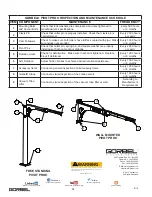
3
9/18
General
There is no one single factor that is more important for minimizing
the possibility of personal injury to the operator and those working in
the area, or damage to property, equipment, or material than being
familiar with the equipment and using Safe Operating Practices.
Hoists and vacuum lifters are designed for lifting and transporting of
material only. Under no circumstances, either during initial installation
or in any other use, should the hoist or vacuum lifter be used for
lifting or transporting personnel.
No operator should be permitted to use the equipment that is not
familiar with its operation, is not physically or mentally fit, or has not
been schooled in safe operating practices. The misuse of hoists or
vacuum lifters can lead to certain hazards which cannot be protected
against by mechanical means; hazards which can only be avoided by
the exercise of intelligence, care, and common sense.
Safe Operating Practices also involve a program of periodic
inspection and preventative maintenance (covered in a separate
section). Part of the operator’s training should be an awareness of
potential malfunctions/hazards requiring adjustments or repairs, and
bringing these to the attention of supervision for corrective action.
Supervision and management also have an important role to play
in any safety program by ensuring that a maintenance schedule is
adhered to, and that the equipment provided for the operators is suit-
able for the job intended without violation of one or more of the rules
covering safe operating practices and good common sense.
The Safe Operating Practices shown are taken in part from the
following publications:
• American National Standard Institute (ANSI)
• Safety Standards for Cranes, Derricks, Hoists
• ANSI B30.2 - Overhead and Gantry Cranes
• ANSI B30.16 - Overhead Hoists
Do’s and Don’ts (Safe Operation of Hoists & Vacuum Lifters)
The following are Do’s and Don’ts for safe operation of overhead
hoists and vacuum lifters. A few minutes spent reading these rules
can make an operator aware of dangerous practices to avoid and
precautions to take for his own safety and the safety of others.
Frequent examinations and periodic inspections of the equipment as
well as a conscientious observance of safety rules may save lives as
well as time and money.
DON’TS - HOISTS & VACUUM LIFTERS
1. Never lift or transport a load until all personnel are clear and do
not transport the load over personnel.
2. Do not allow any unqualified personnel to operate hoist or
vacuum lifter.
3. Never pick up a load beyond the capacity rating appearing on
the hoist or vacuum lifter. Overloading can be caused by jerking
as well as by static overload.
4. Never carry personnel on the hook, the lift tube, or the load.
5. Do not operate hoist or vacuum lifter if you are not physically fit.
6. Do not tamper with or adjust any parts of the hoist or vacuum
lifter unless specifically authorized to do so.
7. Do not divert attention from load while operating hoist or vacuum
lifter.
8. Never leave a suspended load unattended.
9. Never operate a hoist or vacuum lifter that has an inherent or
suspected mechanical or electrical defect.
10. Do not jog controls unnecessarily.
11. Do not operate hoist or vacuum lifter if load is not centered under
hoist or lift tube.
12. Do not operate hoist or vacuum lifter if cable chain or lift tube is
twisted, kinked, or damaged.
13. Do not remove or obscure warning labels.
DO’S - HOISTS & VACUUM LIFTERS
1. Read and follow manufacturer’s instruction, installation, and
maintenance manuals. When repairing or maintaining a hoist or
vacuum lifter, use only manufacturer’s recommended parts and
materials.
2. Read and follow all instruction and warning information on or
attached to a hoist or vacuum lifter.
3. Remove the hoist or vacuum lifter from service and thoroughly
inspect and repair, as necessary, if unusual performance or
visual defects (such as peculiar noise, jerky operations, travel in
improper direction, or obviously damaged parts) are noticed.
4. Establish a regular schedule of inspection and maintain records
for all hoists and vacuum lifters.
6. Never lift loads over people, etc.
7. Check for damaged hooks, load cables, and lift tubes.
10. Make sure a load clears neighboring stockpiles, machinery, or
other obstructions when raising, lowering, or traveling the load.
11. Center hoist or lift tube over the load before operating.
12. Avoid swinging of load when pivoting the jib.
14. Pull in a straight line, so that neither hoist body nor lift tube are
angled around an object.
16. Know the hand signals for hoisting, cross travel, and crane travel
if working with cab-operated hoists or cranes. Operators should
accept signals of only those persons authorized to give them.
SAFE HOIST & VACUUM LIFTER OPERATING GUIDELINES

